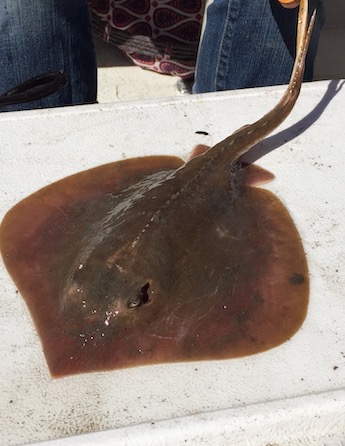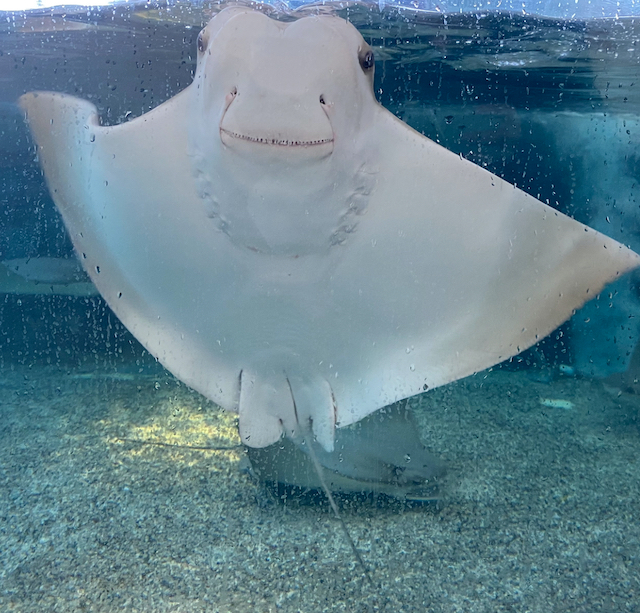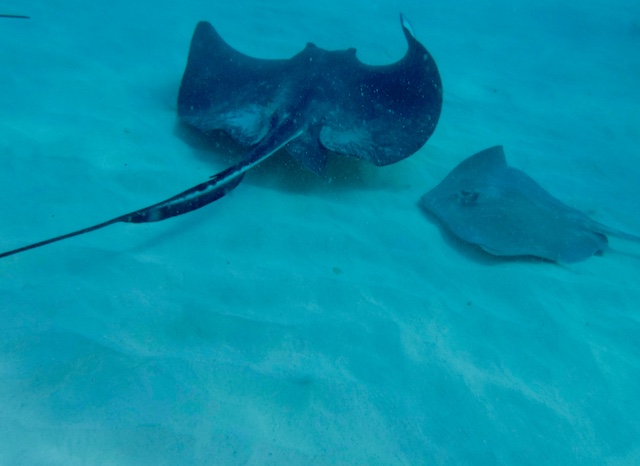Batoid fishes!
Did you know our waters are home to several species of cartilaginous fish belonging to the subclass Elasmobranchii? This unique group includes sharks, skates, and rays. Within it, rays and skates form a group called the Batoid fishes, instantly recognizable for their “dorsoventrally flattened” bodies — think of a swimming ravioli gliding through the water! These fascinating creatures have eyes on the tops of their heads, mouths on the underside of their bodies, and tails that vary in length and shape depending on the species. Instead of bones, their skeletons are made of cartilage, making them both lighter and more flexible as they navigate the ocean floor or open water.
Three batoid fish we’ve recently gotten to see are: the Southern stingray, the Atlantic stingray, and the cownose ray. Southern stingrays are bottom-feeders, stirring up sand with their fins to find crustaceans, mollusks, and small fish — helping control invertebrate populations and recycling nutrients in the seafloor ecosystem. Atlantic stingrays root in soft mud for worms, shrimp, and tiny clams, acting as both predator and prey to keep coastal food webs balanced. Cownose rays, with their distinct cow-like snouts and plate-like teeth, crush clams, oysters, and mussels — shaping shellfish populations and reminding us how changes in predator numbers can ripple through an ecosystem. Together, these graceful gliders highlight the incredible diversity of marine life and the delicate balance that keeps our ocean healthy.

Atlantic Stingray!

Cownose ray!

Southern Stingray!
